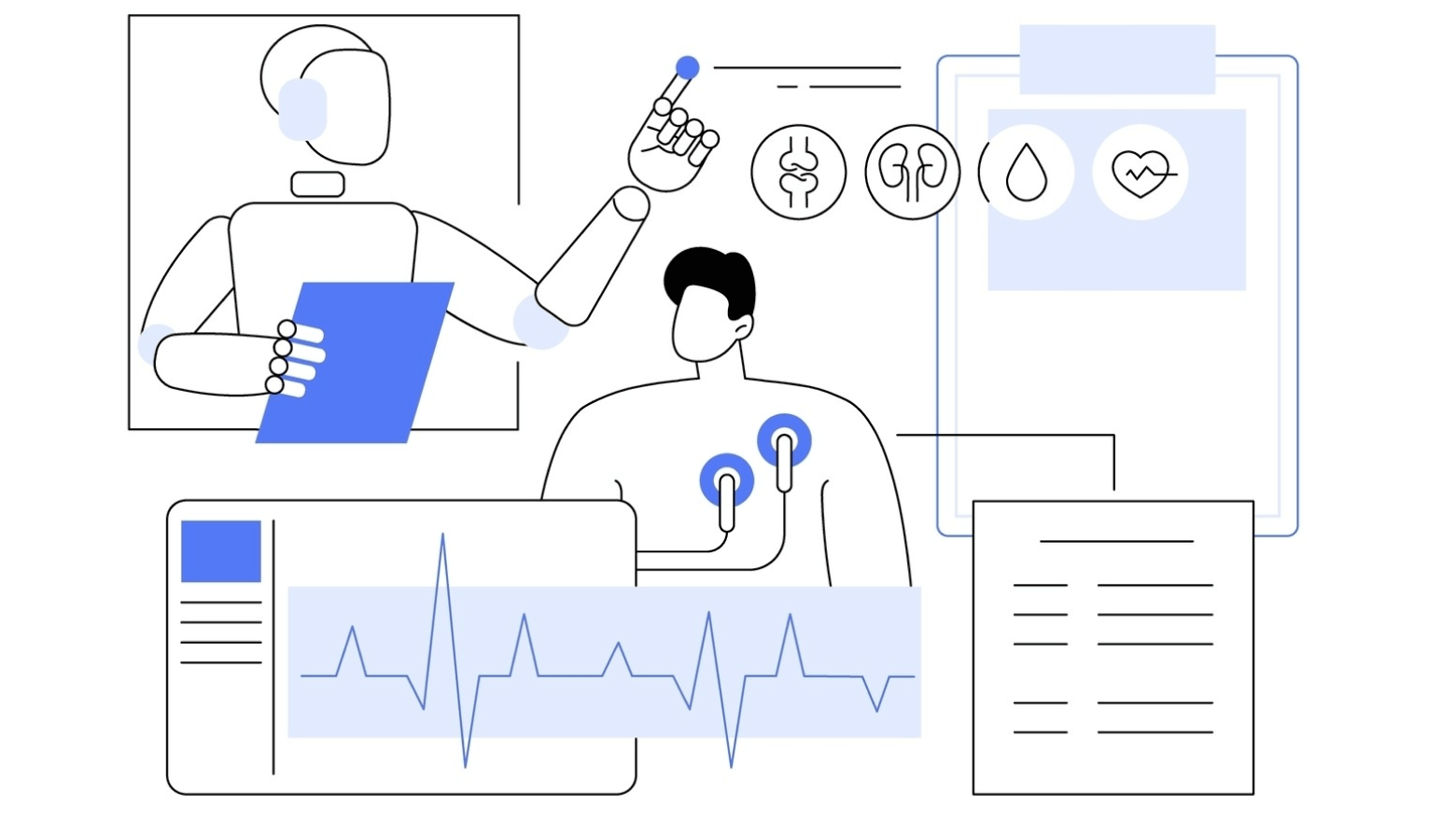Word heals: how speech recognition is changing healthcare
In the U.S., physicians spend an average of 16 minutes documenting information about each patient, which is about one-third of their workday. Imagine how much additional time physicians could devote to direct patient communication and care if routine documentation tasks were performed automatically using speech recognition. But what exactly is speech recognition and how does it work?
Speech recognition is a technology that allows computers and software to identify and process human speech, converting it into text or commands. This technology is based on sophisticated machine learning and natural language processing algorithms that analyze sound waves, identify phonemes, words and phrases, and then convert them into digital text. Modern speech recognition systems are capable of recognizing speech with high accuracy in a variety of environments, including different accents, dialects and noise interference.
At the forefront of this revolution is Lingvanex, offering an advanced local speech recognition solution specifically tailored for medical and life science applications. With innovative algorithms and a deep understanding of the industry, Lingvanex delivers unrivaled accuracy and security, allowing healthcare professionals to focus on what really matters — caring for their patients.

Speech recognition in healthcare: a new era for medicine
Speech recognition technology gives doctors and nursing staff a powerful tool to increase efficiency, improve patient care, and minimize errors. Let's take a look at the benefits of using speech recognition in medicine and its impact on the future of healthcare.
- Accurate and efficient: error-free documentation
Speech recognition systems transform a doctor's words into a digital record instantly and flawlessly. Voice recognition for patients enhances the healthcare experience by allowing individuals to easily communicate their symptoms and concerns without the need for manual input.Work efficiency is increased and precious time is freed up for more important tasks. - Patient care: more attention, less paperwork
Automated medical transcription streamlines the documentation process, allowing healthcare professionals to focus more on patient care rather than paperwork.This fosters an atmosphere of trust and caring that is essential to successful treatment and recovery. - Minimizing errors: Artificial Intelligence for accuracy
The use of speech recognition in medicine significantly reduces the risk of human error. Intelligent systems do not get tired, distracted or inaccurate when translating spoken speech into text. - Data security: prioritizing privacy
When implementing speech recognition technology in the medical field, data security and compliance with regulatory requirements such as HIPAA are of utmost importance. Advanced encryption techniques and strict security protocols are used to ensure the security and confidentiality of medical data during speech recognition. - Research and development: new opportunities for data analysis
Speech recognition opens up new horizons for research and development in medicine. The technology enables the analysis of vast amounts of verbal data, which can help identify trends, patterns and valuable insights.
Key Features of Lingvanex On-Premise Speech Recognition Software for Life Sciences and Healthcare
Lingvanex offers advanced speech recognition solutions to meet the needs of healthcare. The implementation of this technology can significantly improve the quality of medical care, optimize workflows and increase the efficiency of medical staff.
- Multiple language support for patient convenience
Lingvanex solutions support a wide range of languages, which is especially relevant for multinational countries and healthcare facilities serving patients with diverse language needs. - Integration with medical information systems
Lingvanex speech recognition technology integrates seamlessly with existing medical information systems such as electronic health records, laboratory information management systems and others. Voice recognition in hospitals improves efficiency by enabling healthcare providers to quickly document patient information. - Compliance with security and privacy standards
On-premise Speech Recognition Software is designed to meet strict healthcare data security and privacy requirements such as HIPAA. This ensures that sensitive patient information is securely protected and stored in compliance with regulatory requirements. - High accuracy in recognizing medical terms
One of the key features of Lingvanex solutions is high accuracy in recognizing specific medical terms. The system is trained on a vast amount of medical data, allowing it to recognize complex drug names, diagnoses, anatomical terms and other specific concepts without error. - Customizable dictionaries for specific medical fields
Lingvanex offers the ability to create customizable dictionaries for different medical fields such as cardiology, oncology, pediatrics, and others. This allows users to tailor their speech recognition system to the specific terminology of each field, increasing recognition accuracy and minimizing errors. - User-friendly interface and ease of use
Lingvanex solutions feature a user-friendly and intuitive interface that makes it easy to implement and use speech recognition technology in healthcare settings. Even staff members with minimal computer experience can quickly learn the system and start using it effectively in their daily practice. - Technical support and staff training
Lingvanex provides comprehensive technical support and training for medical staff. Lingvanex specialists are ready to assist at all stages of implementation, from initial system setup to resolving any issues that may arise. - Continuous system enhancements and upgrades
Lingvanex continuously works to improve its speech recognition solutions, taking into account customer feedback and the latest advances in artificial intelligence and machine learning. Regular updates to the system ensure that recognition accuracy is improved, functionality is enhanced, and the system keeps pace with changing healthcare needs.
The future of speech recognition in health care and life sciences
Advanced algorithms and growing computing power are enabling the development of increasingly advanced systems that can accurately interpret spoken speech and extract valuable information from it. According to a report by Grand View Research, the global healthcare speech recognition market is expected to reach USD 4.5 billion by 2028, registering a compound annual growth rate of 16.9% during the forecast period.
- Advances in artificial intelligence and machine learning technologies
Artificial intelligence and machine learning are actively changing the landscape of healthcare and life sciences. AI-based systems can analyze large amounts of medical data, helping doctors make faster and more accurate diagnoses. For example, AI from Google Health already recognizes diseases from X-rays with high accuracy.
You can learn more about artificial intelligence on the Lingvanex blog. - Potential to further improve efficiency and service quality
Researchers claim that AI can handle up to 30 percent of nurses' administrative tasks, allowing healthcare professionals to spend more time with patients. Integrating speech recognition with medical systems promises significant improvements in efficiency and quality of care. Doctors can dictate notes while examining a patient, and AI immediately translates them into electronic medical records, saving time and reducing the risk of errors. - Opportunities for interdisciplinary research and collaboration
Speech recognition opens doors for interdisciplinary research and collaboration. Collaborative projects between medical institutions, biological laboratories, and IT companies are becoming more frequent and fruitful. A collaboration between IBM and the Cleveland Clinic led to the creation of Watson for Oncology, a system that analyzes medical records and scientific articles to help doctors choose the best cancer treatments.
Conclusion
Speech recognition in medicine and life sciences has enormous benefits. This technology improves the efficiency of medical staff, enhances patient care and accelerates research processes.
Lingvanex's role in transforming the industry is to provide advanced, reliable and user-friendly speech recognition solutions. The company is constantly improving its products, keeping in mind the needs of its customers and the latest advancements in artificial intelligence. Thanks to this, medical institutions and research centers can be sure that they get the best tools to optimize their work.
The prospects for further development and adoption of speech recognition technology in healthcare are limitless. As algorithms become more advanced and integration with other systems becomes easier, more organizations will adopt this technology. This will lead to increased efficiency, improved patient outcomes, and accelerated scientific discovery, ultimately benefiting all of society.



